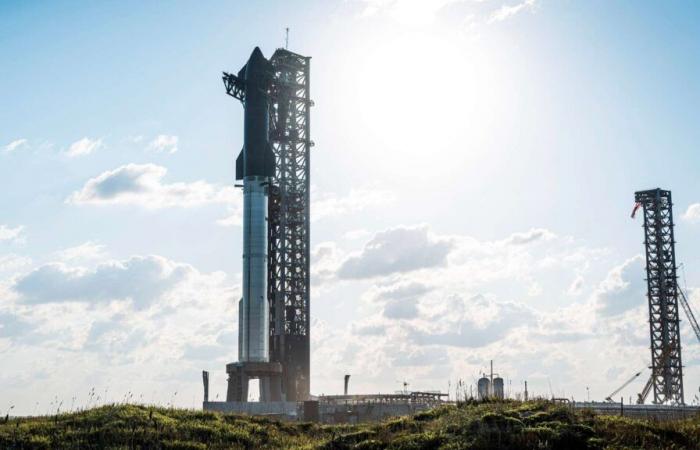SpaceXSpaceX has just announced that Starship’s sixth test flight is scheduled in a few days, on the afternoon of November 18. This test comes only a few weeks after the previous flight, which was a remarkable success and an important milestone in the qualification of a fully and rapidly reusable launch system. Unsurprisingly and as expected, the mission profile of this sixth flight will be largely inspired by that of Starship 5, while integrating several new features which will make this mission particularly attractive and rich in lessons.
The 5th flight of the Starship achieves a simply spectacular feat
The successful first recovery of the Super Heavy proved the viability of the Starship design and provided essential data to optimize the technical performance and architecture of the launch vehicle and its two stages. For this flight, hardware improvements are planned that include increased redundancy in the propulsion systems, better résistancerésistance structural, as well as an optimization of the procedures for maneuvering the stage after its capture by the Mechazilla launch tower and its two chopsticks.
A return of Super Heavy under close surveillance
The conditions necessary for the safe return of the Super Heavy main stage are strict, both for the launcher and for the launch tower which must recover it in mid-flight.
The flight director must give the green light before the so-called “ boostback “. In the event of non-compliance, and to avoid any risk of hitting the launch tower as could have been the case during the previous flight, the Super Heavy will follow a safety trajectory leading to a controlled landing in the Gulf of Mexico. . The return of the booster will be marked by several supersonic booms.
SpaceX has showmanship by scheduling the flight in the afternoon
The upper stage, the Starship, will follow a suborbital trajectory similar to that of the previous flight, with a planned landing in the Indian Ocean. One of the additional objectives of this flight is to demonstrate the operation of a Raptor engine in space, a crucial step to perform a powered deorbit, prior to future test flights in orbit, most certainly during Starship 7 and necessary for the fuel transfer test between two Starships in orbit in 2025. Note that the choice to schedule the flight at the end of the afternoon will allow the Starship to re-enter theatmosphereatmosphere above the Indian Ocean lightlight of the day, thus providing better conditions for visual observations.
New experiments will test Starship’s capabilities and provide data to improve capture and reuse methods. The test will also evaluate thermal shielding materials and deliberately vary the angle of attack, up to a certain control limit, during descent to collect information on various landing profiles.
Finally, future prototypes, including Starship 7, will incorporate significant improvements such as redesigned flaps, larger tanks and more efficient thermal protection systems, with the introduction of new tilestiles.






